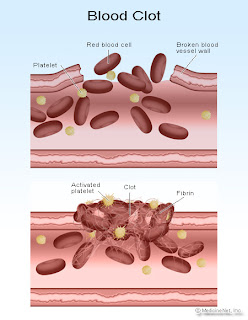Sunday, January 30, 2011
Friday, January 28, 2011
"They are moving, teacher!" (*klik here to get more info)
for the students of 4 Ibn Rusyd
today.....
The first experiment for them...to study the living processes of the unicellular organism. With the water sample taken by myself, Alhamdulillah and Subhanallah...
 They found and they can see the Paramecium sp. moving around. It's a very fast movement. With that, the slide was put under the electric microscope which can be connected to the screne of a television.
They found and they can see the Paramecium sp. moving around. It's a very fast movement. With that, the slide was put under the electric microscope which can be connected to the screne of a television.And....
I can see the feeling of enjoyable moment
with this first experience.
May all of you will be more excited with this subject and
always remember to
do the reference
and revision.
Insya Allah, SUCCESS
will be yours!
Thursday, January 27, 2011
Sunday, January 23, 2011
Human Blood Circulatory System
About Red Blood Cell(Erythrocytes)
About White Blood Cell(Leucocytes)
About Platelet

- A RBC has a strange shape -- small biconcave disc that is round and flat, sort of like a shallow bowl.
- A RBC has no nucleus. The nucleus is extruded from the cell as it matures.
- A RBC can change shape to an amazing extent, without breaking, as it squeezes single file through the capillaries
- A RBC contains hemoglobin, a molecule specially designed to hold oxygen and carry it to cells that need it.
The primary function of red blood cells is to transport oxygen from the lungs to the cells of the body. RBCs contain a protein called hemoglobin that actually carries the oxygen. Hemoglobin combines loosely with oxygen in the lungs where the oxygen level is high and then easily releases it in the capillaries where the oxygen level is low. Each molecule of hemoglobin contains four iron atoms. Each iron atom can bind with one molecule of oxygen (which contains two oxygen atoms, called O2) for a total of four oxygen molecules or eight atoms of oxygen for each molecule of hemoglobin. The iron in hemoglobin gives blood its red color.
 |
| Red Blood Cell / Erythrocytes |
Our blood also contains white blood cells. There are several types of white blood cells. White blood cells are larger than red blood cells and have nuclei. They have different shapes and sizes. White blood cells are located in the lymph nodes and the spleen. Their main function is to produce antibodies that destroy foreign chemicals and pathogenic microorganisms in the blood. They are the “soldiers” of the body that protect it against disease(s).
 |
| White Blood Cell / Leucocytes |
 |
| Lymphocyte among the erythrocytes |
 |
| Eosinophil among the erythrocytes |
About Platelet
Platelets are small fragments of cells formed in the bone marrow. Their function is to clot blood. For example, if you cut your finger accidentally with a knife, blood flows from your finger. The platelets trap red blood cells. The blood changes into a thick substance which is called a blood clot. This stops the bleeding. The clot hardens to form a scab.
Differences between artery and vein

Saturday, January 15, 2011
Saturday, January 8, 2011
Have FUN with these cartoons joke! Miss you, BIO students.
 |
| Form 4 - Chapter 9 : Endangered Ecosystem |
 |
| Form 5 - Cahpter 4 : Reproduction & Growth |
 |
| Form 4 - Chapter 6 : Nutrition |
 |
| Form 5 - Chapter 6 : Variation |
 |
| Form 5 - Chapter 2 : Locomotion & Support |
 |
| Form 4 - Chapter 8 : Dynamic Ecosystem |
Dear Students,
Welcome to "Sharodz Biology Family"
Especially for the new students from form 4.
And the most important, our 2011 candidates,
The form 5 students.
May this new year, 2011...
Will make us more vigorous in doing good things,
Make us more responsible to our duty(as a students),
Make us more appreciate the good things happen to us,
Insya ALlah...
DO ENJOY THE BIOLOGY CLASS FOR THIS YEAR!
Subscribe to:
Posts (Atom)










